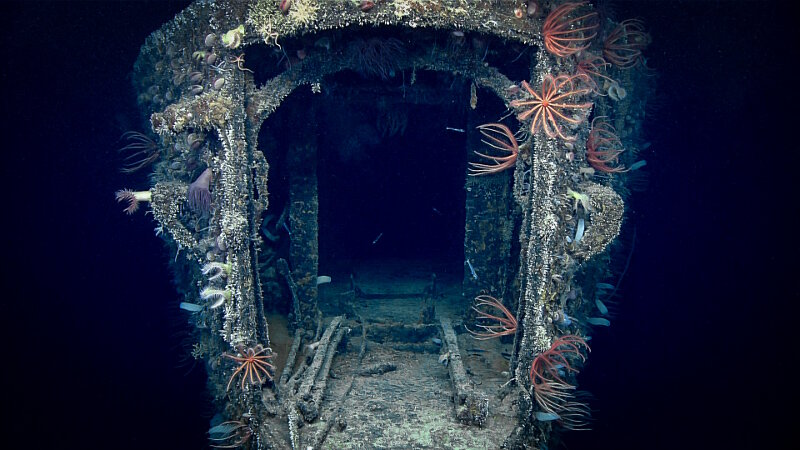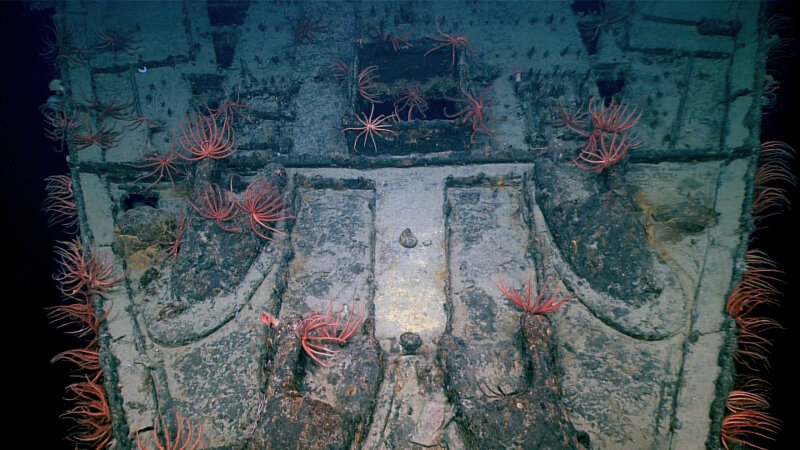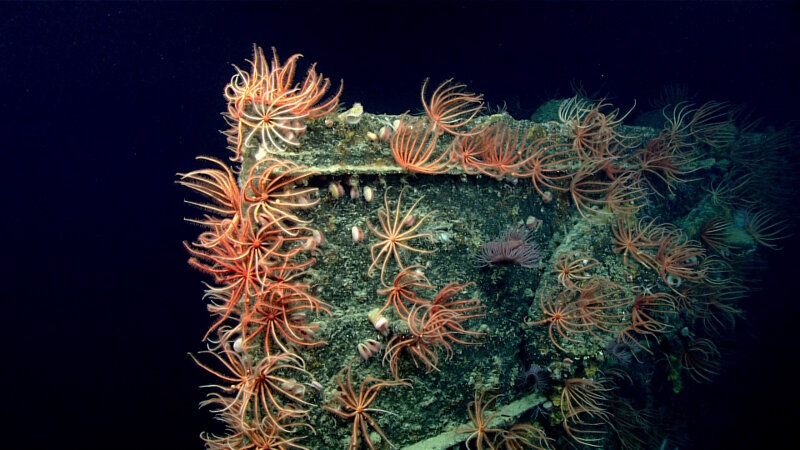-

The rounded stern of the USS Baltimore was modified to include doors and deployment rails for laying sea mines during World War I. Image courtesy of the NOAA Office of Ocean Exploration and Research, Deep-Sea Symphony: Exploring the Musicians Seamounts. Download larger version (jpg, 1.8 MB).
-

This view of the USS Baltimore foredeck shows the forecastle and upper hull strakes have been removed, likely to aid the scuttling of the ship. As shown in this photo, brisingid sea stars dominated much of the available surface on the ship. Image courtesy of the NOAA Office of Ocean Exploration and Research, Deep-Sea Symphony: Exploring the Musicians Seamounts. Download larger version (jpg, 1.8 MB).
-

The knife-edge bow stem of the USS Baltimore was covered in brisingids and other deepwater fauna. Image courtesy of the NOAA Office of Ocean Exploration and Research, Deep-Sea Symphony: Exploring the Musicians Seamounts. Download larger version (jpg, 1.4 MB).